 |
King of Chemicals Manufacturers |
Specifications, Properties, Uses, SDS of Aluminium Glycinate or Aluminum Glycinate USP BP Ph Eur Grade Manufacturer Supplier Exporter Wholesale & Small Packs, CAS Number 13682-92-3 or 41354-48-7. |
|
| King of Chemicals has several associated companies having accreditations like cGMP, GLP - FDA Approved Good Manufacturing Practice and Good Laboratory Practice of WHO standard, ISO-9001, ISO-14001, ISO/IEC 17025, ISO ISO-45000, HACCP, FSSC 220000, FSSAI, "REACH" Registered, Kosher & Halal Certified. e-CTD and DMF support can be made available if needed. We offer USP NF BP Ph Eur EP IP JP Analytical Reagent FCC Food Grade Chemicals & Nutraceuticals. | |
        |
|
Muby Chem Pvt. Ltd. is a several decades old group of companies, engaged in manufacturing, supplying, distributing, wholesale supplies of Aluminium Glycinate or Aluminum Glycinate USP BP Ph Eur Grade for actual users, including retail or small pack supplies for research and development work.
We supply fine and speciality chemicals, pharmaceutical excipients, mineral fortifiers in chemically pure, analytical reagent grade, IP BP USP Ph Eur EP JP and other pharmaceutical grade monograph including FCC Food grade chemicals and Nutraceuticals at best prices. We and/or our associated units have all the facilities to supply as per cGMP standard observing good manufacturing practice and good laboratory practice. We can assure low microbial count and also offer a test certificate for the same. We maintain warehouses across USA, India, and UAE. Our group exports to USA, Canada, Mexico, Argentina, Brazil, Chile, Korea, Malaysia, Thailand, Indonesia, Europe, and several other parts of the world. We supply in wholesale container loads to small pack of few grams. Solid products may be specified for it size and shape as desired by the buyer.

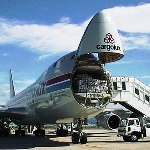
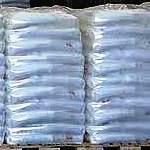
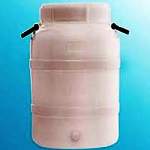
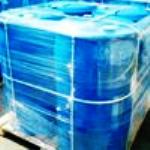
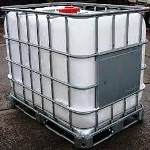
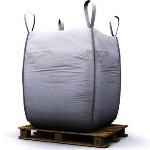
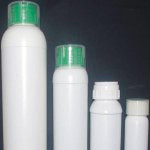
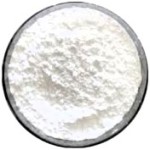
Aluminium Glycinate or Aluminum Glycinate CAS Number 13682-92-3 (or 41354-48-7)
For Properties Specifications Uses of Aluminium Glycinate or Aluminum Glycinate Click Properties, Specifications, Uses, Price, Process of Aluminium Glycinate or Aluminum Glycinate Manufacturer.
For For SDS MSDS Sheet of Aluminium Glycinate or Aluminum Glycinate Click SDS Safety Data Sheet MSDS Sheet of Aluminium Glycinate or Aluminum Glycinate Manufacturer.
The Properties, Specifications, Monograph and Uses of Aluminium Glycinate or Aluminum Glycinate:
Aluminium Glycinate BP Ph Eur Grade Specifications
C2H6AlNO4,xH2O --- 135.1 --- CAS 41354-48-7
Action and use: Antacid.
DEFINITION
Aluminium Glycinate is a basic aluminium monoglycinate, partly hydrated. It contains not less than 34.5% and not more than 38.5% of Al2O3 and not less than 9.9% and not more than 10.8% of N, both calculated with reference to the dried substance.
CHARACTERISTICS
A white or almost white powder.
Practically insoluble in water and in organic solvents. It dissolves in dilute mineral acids and in aqueous solutions of the alkali hydroxides.
IDENTIFICATION
A. Add 0.1 g to 10 ml of a solution prepared by dissolving 0.84 g of citric acid in 8 ml of 1M sodium hydroxide and diluting to 20 ml with water. Add 0.5 ml of a 0.1% w/v solution of ninhydrin in methanol and warm. A purple colour is produced.
B. Suspend 1 g in 25 ml of 0.5M hydrochloric acid and heat gently until a clear solution is produced. Reserve half of the solution. To 2 ml of the solution add 0.15 ml of liquefied phenol , shake and add carefully without shaking 5 ml of dilute sodium hypochlorite solution. A blue colour is produced.
C. The solution reserved in test B yields the reaction characteristic of aluminium salts.
TESTS
Acidity or alkalinity: pH of a suspension of 1 g in 25 ml of carbon dioxide-free water, 6.5 to 7.5.
Neutralising capacity: Shake 0.2 g vigorously with 25 ml of 0.1M hydrochloric acid for 5 minutes and allow to stand for 5 minutes. The pH of the mixture is greater than 3.0.
Arsenic: Dissolve 2.0 g in 18 ml of brominated hydrochloric acid and 32 ml of water. 25 ml of the resulting solution complies with the limit test for arsenic, 1 ppm.
Heavy metals: Dissolve 1.5 g in 20 ml of 2M hydrochloric acid and 10 ml of water, add 0.5 ml of nitric acid and boil for about 30 seconds. Cool, add 2 g of ammonium chloride and 2 g of ammonium thiocyanate and extract with two 10 ml quantities of a mixture of equal parts of isoamyl alcohol and ether. To the aqueous layer add 2 g of citric acid. 12 ml of the resulting solution complies with limit test A for heavy metals, Appendix VII. Use lead standard solution (1 ppm Pb) to prepare the standard (20 ppm).
Mercuric salts: To pass the test.
Chloride: Dissolve 1.0 g in 10 ml of 2M nitric acid and dilute to 100 ml with water. 15 ml of the resulting solution complies with the limit test for chlorides, Appendix VII (330 ppm).
Loss on drying: When dried to constant weight at 130C, loses not more than 12.0% of its weight. Use 1 g.
For USP Grade please see Dihydroxy-aluminum Aminoacetate.
The MSDS-SDS Hazard Statement of Aluminium Glycinate or Aluminum Glycinate:
Dihydroxyaluminum Aminoacetate or Dihydroxyaluminium Aminoacetate or Aluminum Glycinate or Aluminium Glycinate SDS, Safety Data Sheet
MSDS, Material Safety Data Sheet 18-Mar-25
1. Product Identification
Product Name & Other Names: Dihydroxyaluminum Aminoacetate or Dihydroxyaluminium Aminoacetate or Aluminum, (glycinato-N,O)dihydroxy or Aluminum Glycinate or Aluminium Glycinate.
CAS No.: 41354-48-7 or 13682-92-3
EINECS EC Code: 237-193-8
Molecular Weight: 135.06 (Anhydrous)
Chemical Formula: C2H6AlNO4xH2O
Relevant uses and uses advised against (if any): Industrial use.
Suppliers: As per letterhead.
2. Hazards Identification
GHS, Globally Harmonized System Classification in accordance with 29 CFR 1910
Hazard Class and Category Code(s), Regulation (EC) No 1272/2008 (CLP)
Not a hazardous substance or mixture according to Regulation (EC) No. 1272/2008.
This substance is not classified as dangerous according to Directive 67/548/EEC.
Labeling Regulation as per GHS & EC 1272/2008 (CLP) & GHS
GHS Label Elements NONE |
Signal Words: None
Precautionary statements:
P261: Avoid breathing dust/fume/gas/mist/vapors/spray.
P262: Do not get in eyes, on skin, or on clothing.
P281: Use personal protective equipment as required.
P302+P352: IF ON SKIN: Wash with plenty of soap and water.
P304+P340: IF INHALED: Remove victim to fresh air and keep at rest in a position comfortable for breathing.
P305+P351+P338: IF IN EYES: Rinse cautiously with water for several minutes. Remove contact lenses, if present and easy to do. Continue rinsing.
3. Composition/Information on Ingredients
Product Name & Other Names: Dihydroxyaluminum Aminoacetate or Dihydroxyaluminium Aminoacetate or Aluminum, (glycinato-N,O)dihydroxy or Aluminum Glycinate or Aluminium Glycinate.
CAS No.: 41354-48-7 or 13682-92-3
EINECS EC Code: 237-193-8
4. First Aid Measures
Always seek medical advice after the first aid treatment.
Inhalation: If inhaled, remove to fresh air. If not breathing, give artificial respiration. If breathing is difficult, give oxygen. Get medical attention.
Ingestion: Contact medical center quickly. Never give anything by mouth to an unconscious person. Get medical attention.
Skin Contact: Immediately flush skin with plenty of water for at least 15 minutes. Remove contaminated clothing and shoes. Get medical attention. Wash clothing before reuse. Thoroughly clean shoes before reuse.
Eye Contact: Check for and remove any contact lenses. Immediately flush eyes with running water for at least 15 minutes, keeping eyelids open. Cold water may be used. Get medical attention.
5. Fire Fighting Measures
Auto ignition temperature: NA
Combustible. High heat or direct flame is necessary to cause ignition. Toxic fumes and carbon monoxide and nitrogen oxides may be formed in fire.
Fire Extinguishing Media: Dry chemical, foam, or carbon dioxide. Do not use a solid stream of water since the stream will scatter and spread the fire. Water spray may be used to keep fire exposed containers cool.
Extinguishing Media Not recommended: Avoid using solid water jet as it may scatter the fire.
Special Information: In the event of a fire, wear full protective clothing and NIOSH-approved self-contained breathing apparatus with full face piece operated in the pressure demand or other positive pressure mode. At high temperatures under fire conditions, it may produce toxic or irritating fumes. Fire-extinguishing work is done from the windward and the suitable fire-extinguishing method according to the surrounding situation is used. Uninvolved persons should evacuate to a safe place.
6. Accidental Release Measures
Personal precautions, protective equipment, and emergency procedures: Ventilate area of leak or spill. Avoid breathing dust/fumes/gas/mist/vapors/spray. Use individual protective equipment (waterproof boots, suitable protective clothing, safety glasses, etc.). Restrict unprotected personnel from the area. Prevent any contact with hot surfaces. Do not approach facing the wind. Do not touch the spilled material.
Environmental precautions: Do not let the product enter drains, soil, or water sources.
Methods and materials used for containment cleanup procedures and Storage: Contain spilled material. Cover with an inert, non-combustible absorbent material, (e.g. sand, earth, diatomaceous earth, vermiculite). Vacuum or sweep-up and remove to an approved disposal container. Finish cleaning by spreading water on the contaminated surface and allow to evacuate as per law.
7. Handling and Storage
Precautions for safe handling: Apply according to good manufacturing and industrial hygiene practices. Ensure proper ventilation. In case of insufficient ventilation, wear suitable respiratory equipment. Wash thoroughly after handling. Do not drink, eat, or smoke while handling. Avoid contact with skin, eyes, and clothing. Minimize dust generation. Avoid breathing dust/fumes/gas/mist/vapors/spray. Avoid contact with eyes, skin, and clothing. Keep container tightly closed. Avoid ingestion and inhalation. Use individual protective equipment (waterproof boots, suitable protective clothing, safety glasses, etc.). Prevent any contact with hot surfaces.
Conditions for safe storage, including any incompatibilities: Store in cool, dry, and ventilated area away from heat sources and protected from sunlight in tightly closed original container. Keep air contact to a minimum. Store protected from heat, sparks and ignition sources and incompatible materials. Avoid contact with skin and eyes. Avoid inhalation of dust/mist/vapor. Do not store with incompatible materials like strong oxidizing agents and acids. Storage and use areas should be No Smoking areas. Store in light resistant containers. Prevent any electrostatic discharge.
8. Exposure Controls/Personal Protection
Airborne Exposure Limits: Not available. Consult local authorities for acceptable exposure limits.
Ventilation System: A system of local and/or general exhaust is recommended to keep employee exposures as low as possible. Local exhaust ventilation is generally preferred because it can control the emissions of the contaminant at its source, preventing dispersion of it into the general work area. Please refer to the ACGIH document, Industrial Ventilation, A Manual of Recommended Practices, most recent edition, for details.
Personal Respirators (NIOSH Approved): For conditions of use where exposure to the substance is apparent and engineering controls are not feasible, consult an industrial hygienist. For emergencies, or instances where the exposure levels are not known, use a full-face piece positive-pressure, air-supplied respirator. WARNING: Air purifying respirators do not protect workers in oxygen-deficient atmospheres.
Skin Protection: Wear impervious protective clothing, including boots, gloves, lab coat, apron or coveralls, as appropriate, to prevent skin contact.
Eye Protection: Use chemical safety goggles and/or a full face shield where splashing is possible. Maintain eye wash fountain and quick-drench facilities in work area.
Other Control Measures: Maintain good housekeeping in work area. Dust deposits on floors and other surfaces may pick up moisture and cause the surfaces to become slippery and present safety hazards. Handle in accordance with good industrial hygiene and safety practice. Wash hands after handling.
9. Physical and Chemical Properties
Appearance: Solid Crystals or Powder.
Odor: odorless.
Odor threshold: Not available.
pH: Not available.
Relative density: Not available.
Melting point/freezing point: Not available.
Initial boiling point and boiling range: Not available.
Flash point: Not available.
Auto-ignition temperature: Not available.
Decomposition temperature: Not available.
Upper/lower flammability or explosive limits: Not available.
Vapor pressure: Not available.
Vapor density: Not available.
Evaporation rate: Not available.
Flammability (solid, gas): Not available.
Partition coefficient: n-octanol/water: Not available.
Solubility: Insoluble in cold water
Viscosity: Not available.
Molecular Weight: 135.06 (Anhydrous)
Chemical Formula: C2H6AlNO4-xH2O
10. Stability and Reactivity
Stability: It is stable under ordinary conditions of use and storage.
Hazardous Decomposition Products: Carbon dioxide, carbon monoxide, nitrogen oxides, aluminum oxide and toxic fumes may form when heated to decomposition.
Hazardous Polymerization: Not reported. However, it can explode under certain conditions.
Incompatibilities: Acids, oxidizing agents, heat, and sparks.
Conditions to Avoid: Heat, flames, ignition sources and incompatibles.
11. Toxicological Information
Oral rat LD50: Not available
Oral mouse LD50 Not available
Mutagenic effects: NA.
Teratogenicity: No information available.
Reproductive Effects: No information available.
Carcinogenicity: Not listed as a carcinogen.
12. Ecological Information
Toxicity Data: No information available.
The product and the products of its degradation are not known to be toxic.
Persistence and Degradability: No information available.
Mobility: No information available.
Bioaccumulation/ Accumulation: No information available.
Results of PBT and vPvB assessment: No data available for assessment.
13. Disposal Considerations
Whatever cannot be saved for recovery or recycling should be managed in an appropriate and approved waste disposal facility. Processing use or contamination of this product may change the waste management options. State and local disposal regulations may differ from federal disposal regulations. Dispose of container and unused contents in accordance with federal, state, and local requirements.
14. Transport Information
Land Transport DOT USA, TDG Canada, ADR/RID Europe: Not regulated.
Sea Transport IMO/IMDG: Not regulated.
Air Transport ICAO/IATA: Not regulated.
15. Regulatory Information
USA:
California Proposition 65: Not listed.
SARA 311/312 Hazards: Not listed.
16. Other Information
DISCLAIMER: The information and recommendations set forth herein are presented in good faith and believed correct as of the date hereof. It is compiled from various sources, and it is not necessarily all inclusive nor fully adequate in every circumstance. In addition, these suggestions should not be confused with nor followed in violation of applicable laws, regulations, rules, or insurance requirements applicable. This SDS MSDS sheet is intended only as a guide to the appropriate precautionary handling of the material by a professionally trained person using this product. Individuals receiving the information must exercise their independent judgment in determining its appropriateness for a particular purpose. This shall not constitute a guarantee for any specific product features and shall not establish a legally valid contractual relationship. In no case shall our company be liable to loss or damages by the product user.

Aluminium Glycinate or Aluminum Glycinate Manufacturers, Suppliers, Exporters, Wholesalers:
King of Chemicals manufacturers

Plot No. 2900/46&47 + 2900/163to167, GIDC, Ankleshwar, Dist. Bharuch, India
India, USA, UAE
TEL: (Office) 91-22-23774610, 91-22-23723564
e-mail: info@kingofchemicals.com
Copyright and Usual Disclaimer is Applicable --- March 18, 2025
If I give you “My Word” Nobody can undo it.
If I sign an “Agreement” my Lawyer will undo it
Our products are for industrial and laboratory use only. The user must test the material before use. We are not dispensing chemists or druggist and do not offer over the counter type (OTC) products for medical use by individuals.
We and our associates manufacture pure chemicals surpassing Monograph Specifications of Analytical Reagent Standards, British & European Pharmacopoeia BP Ph Eur EP Standard, US Pharmacopoeia USP NF Standard, Indian Pharmacopoeia IP Standard, Japan Pharmacopoeia JP Standard, FCC Food Grade Standard. |
|